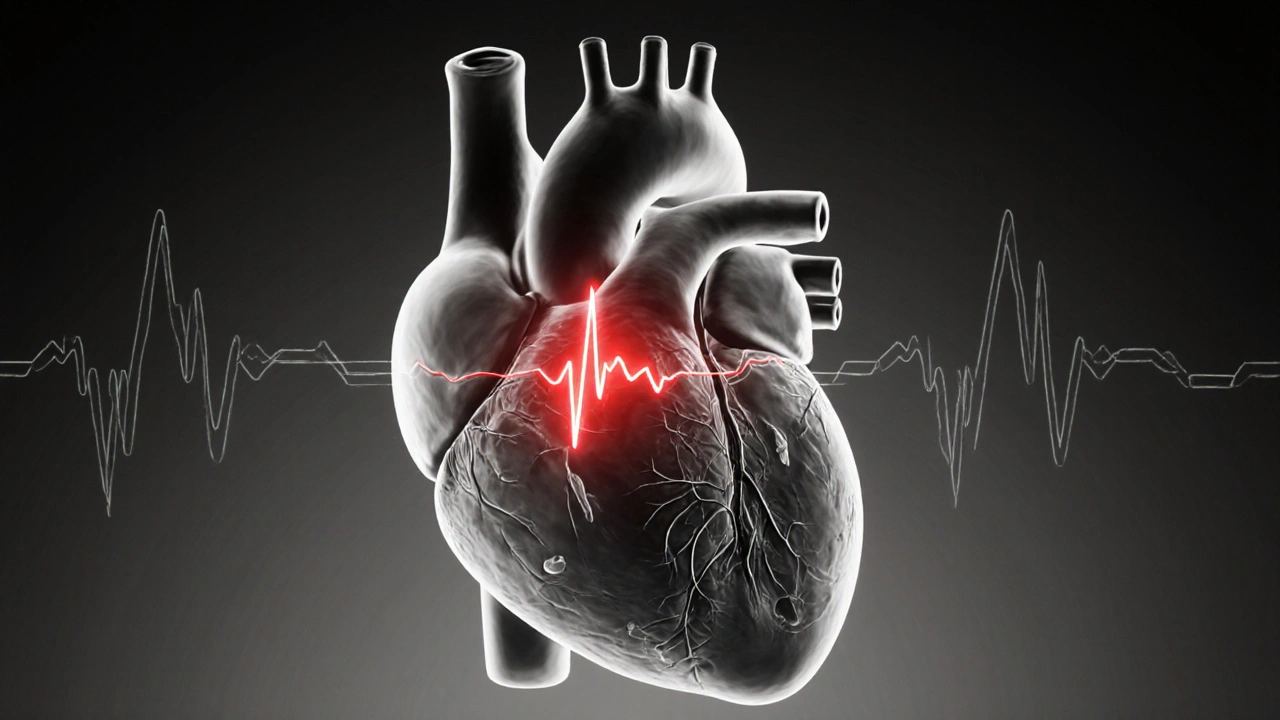Amiodarone: Uses, Risks, and Practical Guidance
When working with Amiodarone, a class III antiarrhythmic medication that helps control serious heart rhythm disorders. Also known as Cordarone, it’s prescribed for life‑threatening arrhythmias such as ventricular tachycardia and atrial fibrillation. The drug works by prolonging the cardiac action potential, which slows electrical conduction and stabilizes the heartbeat. Because of its long half‑life—up to several weeks—steady‑state levels take time to build, so doctors often start with a loading dose followed by a lower maintenance dose. Amiodarone is powerful, but its potency brings a set of unique safety concerns that anyone starting therapy should understand.
Key Related Concepts
One of the main antiarrhythmic drug, agents that correct irregular heartbeats by targeting cardiac ion channels, amiodarone sits alongside agents like flecainide and sotalol, yet it differs in its extensive tissue accumulation and organ‑specific side effects. The most common rhythm disorder it treats is atrial fibrillation, an irregular, often rapid heart rate that raises stroke risk. While amiodarone can reliably restore rhythm, it also introduces the risk of thyroid toxicity, both hypothyroidism and hyperthyroidism caused by iodine‑rich drug composition. Regular thyroid function tests are therefore a must‑have part of any monitoring plan. Another organ to watch is the lung; amiodarone‑induced pulmonary toxicity can present as a dry cough or shortness of breath, especially after high cumulative doses. Finally, the drug’s broad interaction profile means clinicians must review all concurrent medications—warfarin, statins, and certain antivirals can all magnify side‑effects or alter amiodarone levels.
The relationships among these entities shape how you manage therapy. For example, the semantic triple "Amiodarone treats atrial fibrillation" captures its primary indication, while "Amiodarone can cause thyroid toxicity" highlights a critical adverse effect. Likewise, "Monitoring thyroid function is essential when using amiodarone" links the drug to a required safety step, and "Drug interactions influence amiodarone plasma concentration" underscores the need for medication review. Understanding these connections helps you balance efficacy with safety: start with the loading regimen, schedule thyroid and liver labs every 3‑6 months, and keep an eye on respiratory symptoms. Below you’ll find detailed articles that walk through dosage tricks, side‑effect management, interaction checklists, and real‑world patient experiences, giving you a complete picture before you or your clinician make a decision.
Amiodarone Effectiveness for Supraventricular Tachycardia: Benefits, Risks & Dosing
- Laura Ledas
- Sep, 6 2025
Explore how Amiodarone works for supraventricular tachycardia, its success rates, dosing guidelines, side‑effects, and how it stacks up against other rhythm drugs.
Learn More